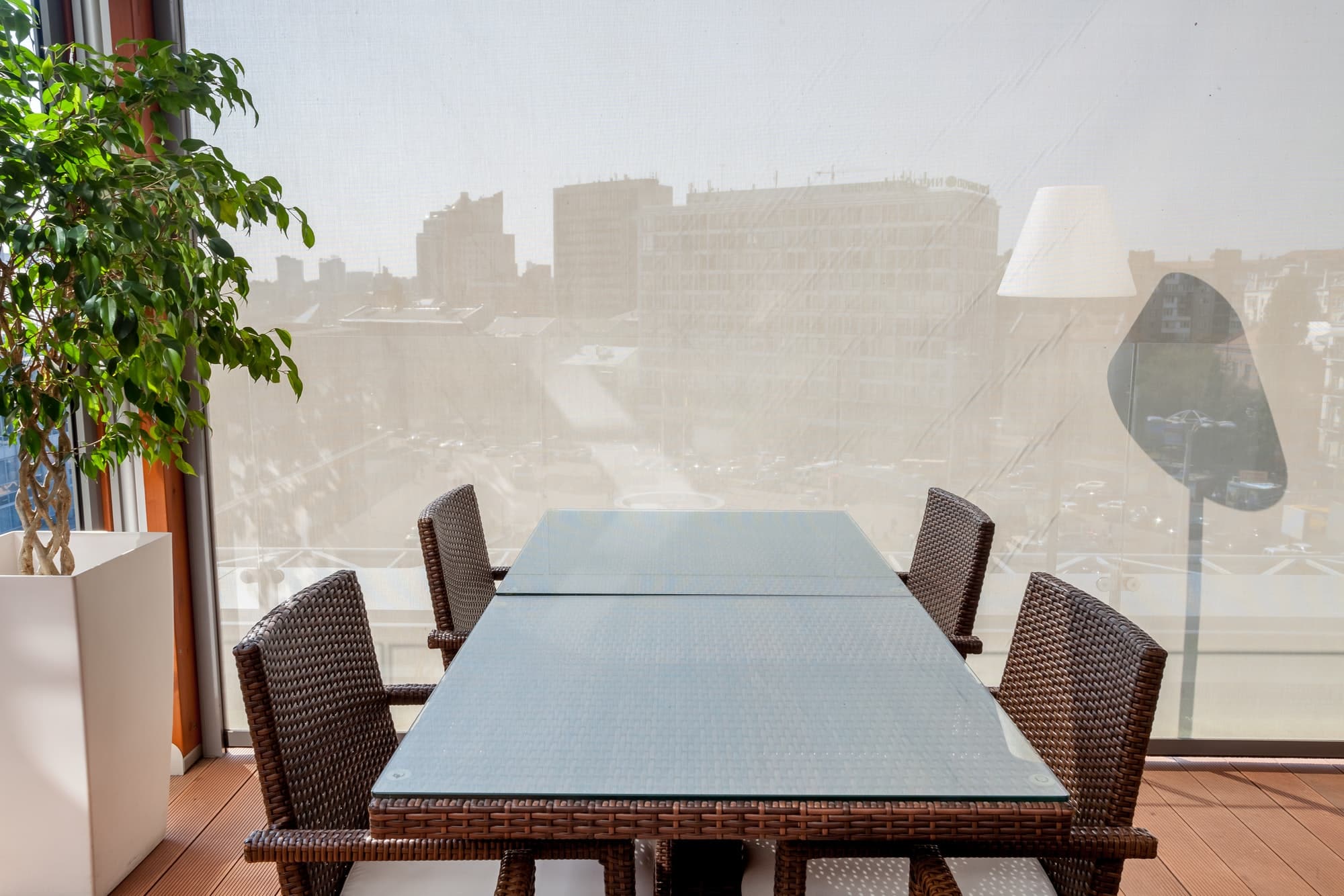How to choose the ideal interior design firm in Philadelphia ?

In Philadelphia, the quest for perfection in interior design can be as exhilarating as the city's search for the famous Philly cheesesteak. Choosing the perfect interior design firm is a decisive step in creating the space of your dreams. With a plethora of agencies offering services ranging from the design of a small urban apartment to the complete renovation of a historic home, the task can seem daunting. In this article, we will support you with advice on choosing your service provider.
Assessing your interior design needs
The first step is to fully understand your interior design needs, because selecting the ideal interior design firm in Philadelphia requires a blend of research and intuition. Whether you aspire to transform your primary or secondary residence in the United States or Philadelphia, assessing your needs will allow you to clearly define your objectives and guide the design process effectively.
En parallèle : The art of minimalism: living more with less
The first consideration in assessing your interior design needs is to analyze your lifestyle and daily habits. Think about how you use each space in your home and identify the features and functions that are essential to your comfort and well-being. For example, if you enjoy cooking and entertaining guests, a spacious, well-equipped kitchen with adequate storage space may be a priority for you.
Once you've identified which aspects of your lifestyle need to be addressed, it's important to define your interior design goals and priorities. Think about what you hope to achieve with your design project, whether it's an aesthetic update, space optimization, or functionality. Prioritize your goals to help you focus your efforts on what's most important to you.
Avez-vous vu cela : Made-to-measure furniture: a key element in luxury interior design
Another important aspect of evaluating your interior design needs is to consider your personal aesthetic and style preferences. Think about what type of mood and atmosphere you want to create in your space, whether that's a modern and minimalist aesthetic, a traditional and classic style, or something more eclectic and bohemian. Discover the design elements and decorative elements that suit you and that correspond to your vision for your interior.
Finally, when evaluating your interior design needs, it is important to consider potential future needs. Anticipate changes in your lifestyle, family, or aesthetic preferences that could influence your long-term design choices. Opt for flexible and scalable solutions that can adapt to changes in your lifestyle and needs.
Search and pre-selection of design offices
When you embark on an interior design project, selecting the design office that will support you is a crucial decision. These professionals will be your partners throughout the process, from design to completion, and will have a significant impact on the success of your project.
Before you begin your search, it is essential to clearly define your needs and goals for your interior design project. Whether decorating a primary residence, a commercial building or a public infrastructure, each project has its own unique challenges and requirements. Take the time to think about your design, budget, schedule and sustainability priorities to find a design firm that can meet those specific needs.
Once you have clarified your needs, it's time to start your research. Explore the different design firms available in your area and review their portfolios, certifications, client references and previous projects. Look for design firms that have experience with projects similar to yours and have a solid reputation in the construction industry.
When shortlisting design firms, be sure to assess their expertise and skills in key areas of your project. This may include skills in architectural design, decoration and interior design, project management, environmental sustainability, regulatory compliance, etc. Make sure the design firm you choose has the necessary resources to meet your specific needs.
Once you've shortlisted a few promising design firms, take the time to meet their teams in person. This step is an opportunity to discuss your project in detail, ask questions about their design approach, working methodology, project management process, etc. Make sure you feel comfortable with the team and that you share a common vision for your project.
Before making a final decision, remember to check the credentials and recommendations of the design firms you are considering. Contact their former clients for feedback on their collaboration with the design office to obtain, their level of satisfaction and the results obtained. This step will help you get a clearer perspective on the reputation and trustworthiness of each candidate.
Interviews and visits
In the field of interior design, interviews and visits are fundamental elements in the process of creating a harmonious and functional space. These steps allow designers to better understand the needs, preferences and lifestyles of their clients, while exploring the characteristics and constraints of the environment to be designed.
Before beginning any interior design project, designers must conduct in-depth interviews with their clients. These interviews allow designers to understand the needs, expectations, aesthetic preferences and budgetary constraints of their clients.
The questions asked during these interviews may relate to the clients' lifestyle, daily habits, decoration tastes, functional requirements, etc. This in-depth understanding of the client's needs is essential to creating a personalized design that perfectly meets their expectations.
After initial interviews, designers conduct site visits to explore the space to be designed. During these visits, designers note the architectural features of the space, such as the layout, size, shape and height of rooms, as well as any structural and functional constraints.
Designers also take into account the existing environment, such as natural lighting, elements, building materials, etc. This in-depth assessment of the space allows designers to understand the possibilities and challenges of the project. , and to design solutions adapted to each specific situation.
Final selection and contract
After conducting in-depth interviews and exploring several options, it's time to make a final decision on your interior design team. Carefully review each candidate's portfolios, references and proposals, taking into account their experience, expertise, aesthetic style and compatibility with your vision. Select the partner who best matches your needs and expectations, and with whom you will feel most comfortable collaborating.
Once you have chosen to designate, it is time to formalize your agreement by finalizing a contract. The contract should clearly define the terms and conditions of your collaboration, including the responsibilities of each party, deadlines, costs, payments, expected deliverables, insurance, etc. Be sure to review the contract in detail with your designer to clarify any ambiguous or unsatisfactory aspects before the designer.
Tips for successful collaboration
There are several tips to put into practice for a successful collaboration when selecting an interior design service provider.
Open and honest communication: Establish transparent communication from the beginning and encourage open dialogue throughout the project. Express your needs, concerns and ideas clearly, and listen carefully to your design team's suggestions and advice.
Set clear expectations: Clarify your expectations up front regarding style, budget, deadlines and expected results. The clearer the expectations, the less room for misunderstandings or disappointments.
Trust your team: Trust the expertise and judgment of your design team. They are there to guide and advise you throughout the process, so be open to new ideas and creative suggestions.
Be flexible: Be willing to compromise and adjust your plans along the way. Interior design projects can sometimes require adjustments based on technical, budgetary or aesthetic constraints.
Stay involved: Although you have hired a professional design team, your continued involvement is essential to ensure the success of the project. Make sure you actively participate in meetings, give feedback on design proposals, and stay informed about the progress of the project.
Be open to feedback: Be open to feedback from your design team and be prepared to take their recommendations into account. Their goal is to create a space that meets your needs and expectations, so be receptive to their suggestions to improve the end result.
Anticipate the unexpected: understand that there may be unforeseen events or challenges throughout the design and delivery process. Stay calm and flexible in these situations and work collaboratively with your team to find effective solutions.
Conclusion
By following these tips and maintaining a positive, collaborative working relationship with your interior design team, you can be sure to deliver a project that reflects your style, meets your needs and exceeds your expectations.
